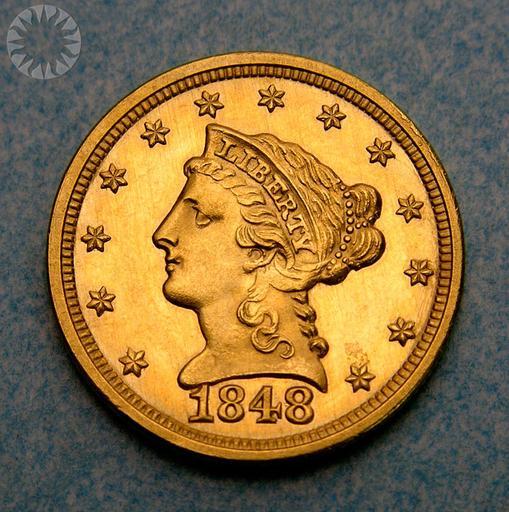MAKE A MEME
View Large Image

| View Original: | United_States,_2_1/2_Dollars,_1848_CAL.jpg (636x640) | |||
| Download: | Original | Medium | Small | Thumb |
| Courtesy of: | www.flickr.com | More Like This | ||
| Keywords: legendary coins legendarycoins numismatics money smithsonian probably public domain probablypublicdomain round circle indoor ancient SI Neg. 2005-27322. Date: 9/1/2005...In 1848, the largest single gold rush in history was just getting under way in California. This event triggered a mass migration of fortune hunters from around the world. The territory had only recently passed into American hands as an outcome of U.S. victory in the Mexican War. The new California military governor Col. R. B. Mason, sent 230 ounces of native bullion to the Secretary of War, who in turn passed the gold on to the Mint. .Much of this first shipment went into large, honorific medals Congress authorized for the winning American generals in the war, Zachary Taylor and Winfield Scott. Scott's medal is in the Smithsonian Collection. The rest of the gold was used to make "quarter eagles," or 2? dollar gold pieces. These became some of the most legendary coins in American numismatic history..The basic design was standard: the head of Liberty was on one side, a somewhat bellicose eagle on the other. The mint had been striking quarter eagles with these designs for nearly a decade. But closer scrutiny showed that these coins had one odd feature: above the eagle on the reverse, the initials "CAL." These were added by means of a punch. .Precisely 1,389 quarter eagles marked with the CAL stamp were made. Less than 200 still exist. They bear poignant witness to the colorful history of the American West..Click here to view the obverse...Credit: Tom Mulvaney (Smithsonian Institution) SI Neg. 2005-27322. Date: 9/1/2005...In 1848, the largest single gold rush in history was just getting under way in California. This event triggered a mass migration of fortune hunters from around the world. The territory had only recently passed into American hands as an outcome of U.S. victory in the Mexican War. The new California military governor Col. R. B. Mason, sent 230 ounces of native bullion to the Secretary of War, who in turn passed the gold on to the Mint. .Much of this first shipment went into large, honorific medals Congress authorized for the winning American generals in the war, Zachary Taylor and Winfield Scott. Scott's medal is in the Smithsonian Collection. The rest of the gold was used to make "quarter eagles," or 2? dollar gold pieces. These became some of the most legendary coins in American numismatic history..The basic design was standard: the head of Liberty was on one side, a somewhat bellicose eagle on the other. The mint had been striking quarter eagles with these designs for nearly a decade. But closer scrutiny showed that these coins had one odd feature: above the eagle on the reverse, the initials "CAL." These were added by means of a punch. .Precisely 1,389 quarter eagles marked with the CAL stamp were made. Less than 200 still exist. They bear poignant witness to the colorful history of the American West..Click here to view the obverse...Credit: Tom Mulvaney (Smithsonian Institution) | ||||